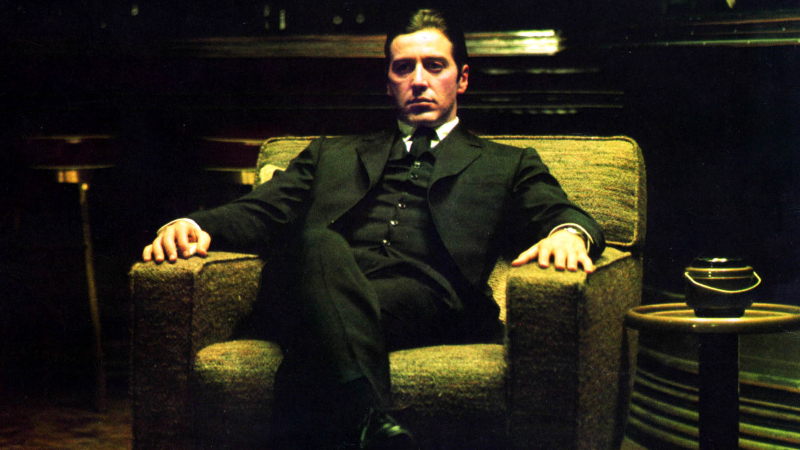The Godfather Part II: The Great Debate
07 March 2022
LUMI programmer Fionntán Macdonald gives his take on The Godfather Part II and the great debate over which Godfather film is the best.

Cinema is, and has always been, a communal experience. While a great film can be a transcendent individual experience, there’s something greater that comes from the exchange of ideas, the mutual appreciation of a classic and the great discourses that come once the auditorium has emptied. One of the most pervasive debates in cinematic history stems from a deceptively simple question: which is the better film, The Godfather (1972) or The Godfather Part II (1974).
Following the runaway success of Francis Ford Coppola’s 1972 tour de force, the audience’s appetite for the Corleone crime family was insatiable and green lighting a sequel project was inevitable. The problem being that the epic tale was already told, the material exhausted and the book closed on this inimitable family. At least, so it seemed.
The very reason that Part II of this epic is so well thought of is how it completely defied everything that a sequel was thought to be and uncovered untold depths in an already profoundly complex narrative. Following Michael (Al Pacino, reprising his best role) as he expands the family empire internationally, this film is better described as a historical epic than a crime drama. During the expansive run time of 3 hours and 23 minutes, this saga extends its reach to New York, Nevada, Sicily and Cuba: yet accomplishes this without straying from the emotional core that centred the preceding masterwork.
For all its scope this film is still about a family and, more specifically, a father and son. Vito, here played by Robert De Niro in a star-making performance, is as much a part of this story as his son and Coppola’s exploration of this icon’s past is perhaps the greatest strength of Part II.
Puzo’s original novel contains an extended section that focuses entirely on Vito and the origins of the Don; a peasant boy in Sicily, his entire family is massacred before his eyes at the whim of a cruel Mafioso and he is forced to flee at the behest of his mother who with her dying words tells him to run. This tragic upbringing would harden him into the man we are introduced to in the first film and his origin story was the starting point of cinema’s greatest sequel.
The Godfather Part II is a masterclass in narrative structure, expertly interweaving the stories of Michael’s fall into darkness with his father’s rise in the underworld with a sophistication that required the perfect execution of so many disciplines. The film’s editing perfectly contrasts the two interwoven stories and the flashback sequences are shot in a subline sepia tone that connotes an old-world sensibility which perfectly captures the essence of Vito’s character. This gives the gorgeous chiaroscuro cinematography of the first film a run for its money in terms of pure aesthetics while the sequel manages to definitively surpass its predecessor in its production design.
Coppola would later become infamous for his dedication to complete immersion within his stories and would close down whole city blocks in New York to capture the period authenticity he required to execute Vito’s story. It was reported that he instructed his crew to ensure every label on every tin in every storefront was an exact replica of a real product from the period, despite the fact that none of these would ever appear on camera. Obsessive this may be, but the result was spectacular.
If this film rivals the first in technical achievement, the performances of the key players certainly do as well. Five of the billed cast would be nominated for Academy Awards while De Niro would make history by winning in his own category. This was a historic achievement in that not only did he perform his entire role in a second language but he would do so as a relative unknown.
Furthermore, the criminally underappreciated character actor John Cazale would return as Fredo (Michael’s maligned older brother) and expresses such daring vulnerability in his performance that Michael’s story becomes a heart-rending tragedy as we see just what has become of the family that his father held so dear, and how Michael may have destroyed it.
Part II succeeds in almost every way that Part I did. Shakespearean, epic, tragic and beautiful this follow up feature captured lightning in a bottle a second time and succeeds on every level. Its only indictment is that it failed to surpass the unsurpassable, but may have matched it.
The great debate continues: and may it never end.
- written by LUMI programmer Fionntán Macdonald




